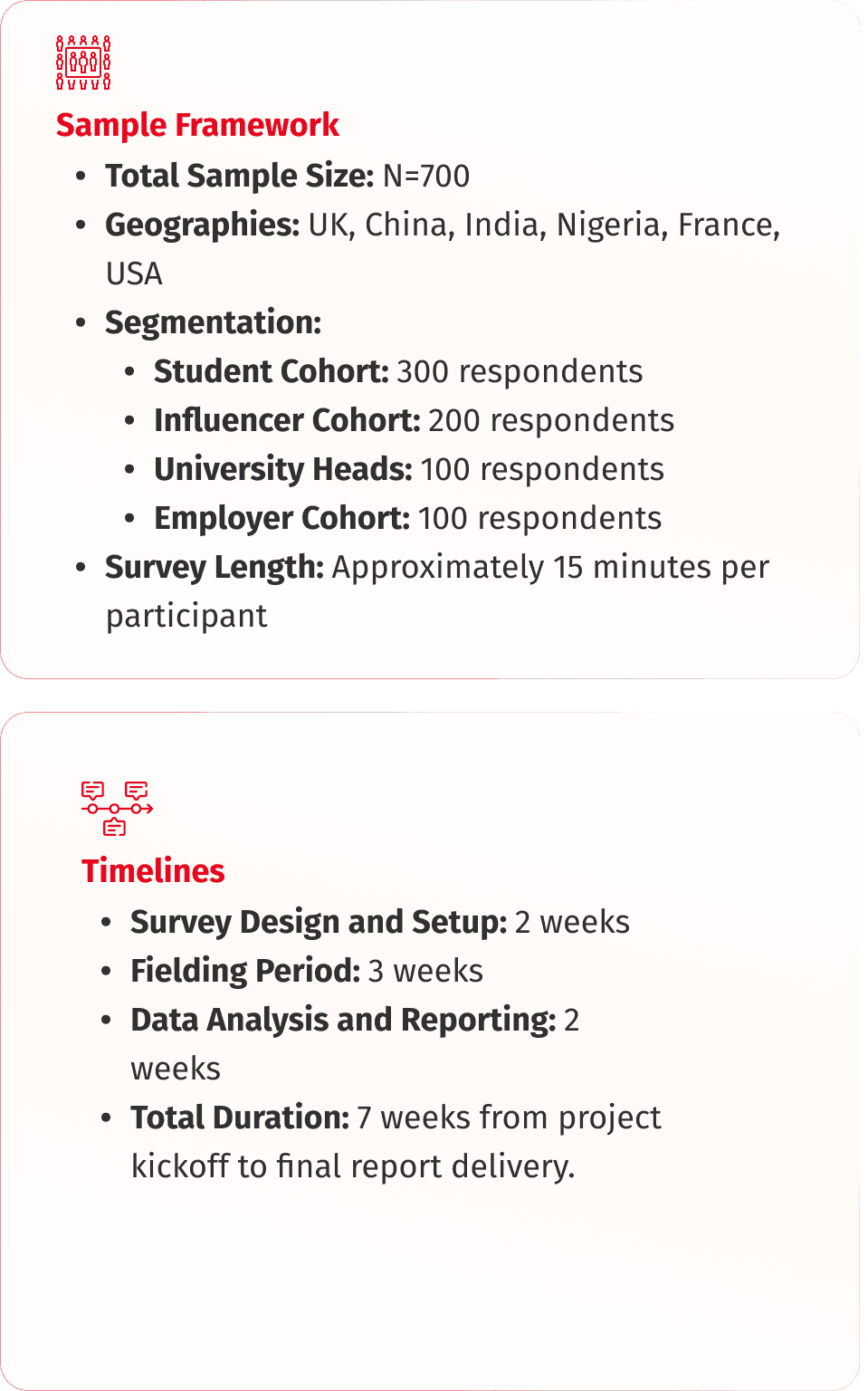
Education
Navigating Graduate Admissions in a Shifting Testing Landscape


In today’s competitive educational landscape, understanding the decision-making processes of students, parents, advisors, and educational leaders is essential for educational institutions and edtech companies to refine their strategies. Our Global Education Market Segmentation & Decision-Making Study aimed to provide comprehensive insights into how different cohorts across the UK, China, India, Nigeria, France, and the USA approach education decisions.
We surveyed a total of 700 participants segmented into multiple cohorts, including students, parents, advisors, university heads, and employers, to identify key decision-making drivers, preferences, and needs within the education sector.
To ensure comprehensive and accurate insights, we employed a multi-method research approach, integrating both quantitative surveys and qualitative insights. This approach was vertically integrated, allowing us to manage the entire lifecycle of the research, ensuring high-quality, tailored insights for the education sector.
Quantitative Surveys:
Key metrics captured included:
Cohort-Specific Focus: The survey targeted different cohorts, including:
Qualitative Insights:
Immersion & Kickoff:
Survey Design & Execution:
Market Landscape Audit:
Brand Health Survey:
The study targeted 700 respondents from six distinct cohorts:

The study provided actionable insights for educational institutions, policymakers, and edtech providers: